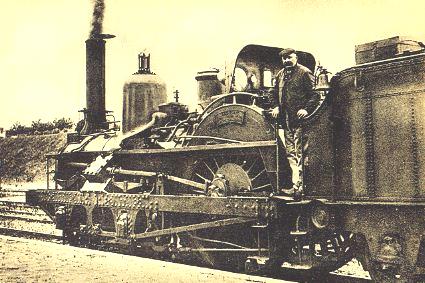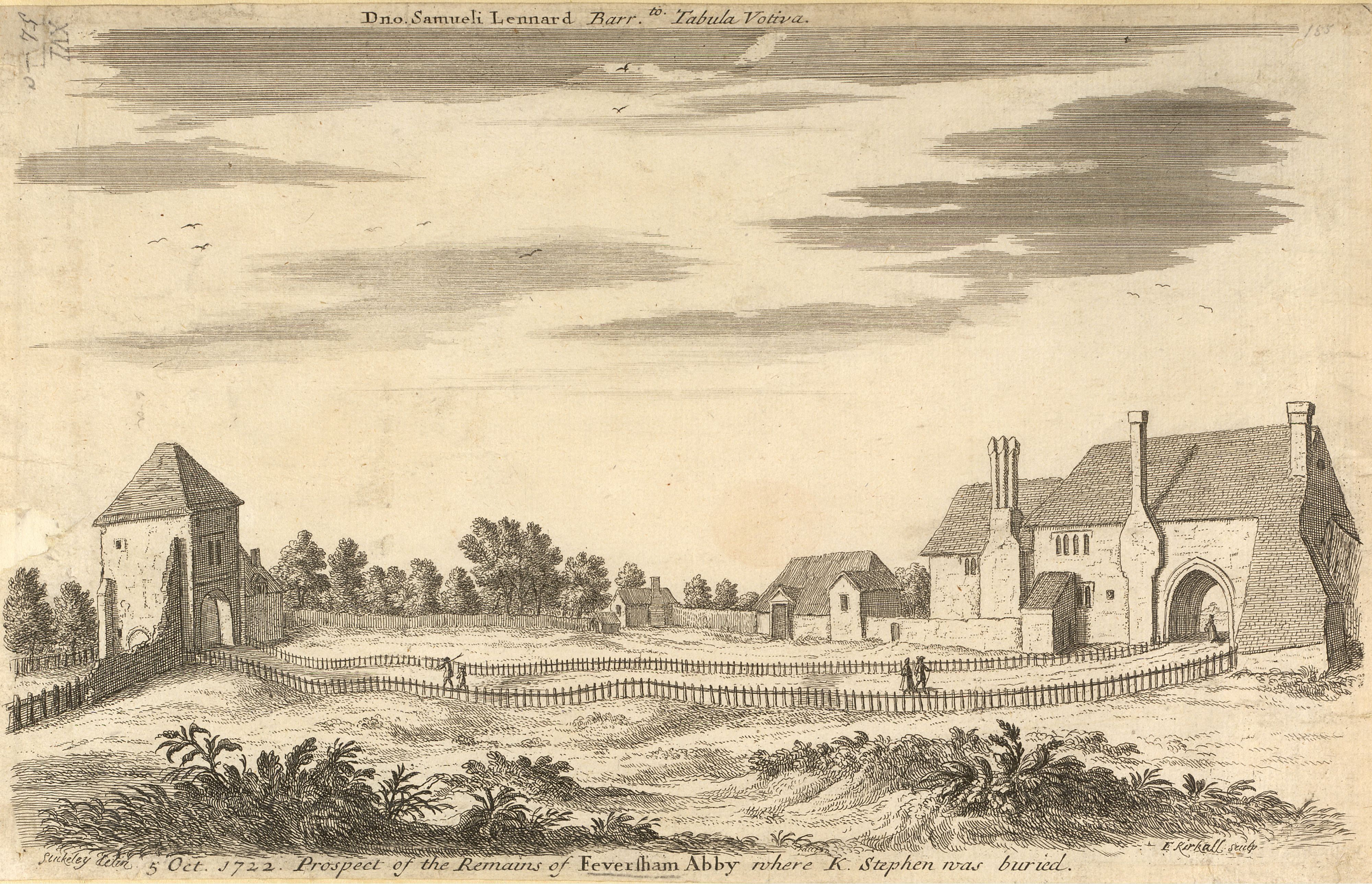|
LCDR Sondes Class
The LCDR ''Sondes'' class was a class of six steam locomotives of the 4-4-0ST wheel arrangement. They were designed by Thomas Russell Crampton for the East Kent Railway (EKR) to specifications prepared by Joseph Cubitt. An order was placed in March 1857 with R. & W. Hawthorn & Co. for six locomotives at £2,700 each; they were delivered to the EKR between November 1857 and March 1858. The first section of the EKR (between and ) opened on 25 January 1858; and the EKR became the London, Chatham and Dover Railway (LCDR) in 1859. The locomotives were prone to frequent failure: at one point, before the sixth had been received, the first five were all out of service simultaneously. The LCDR asked Daniel Gooch of the Great Western Railway to report on the condition of the locomotives; he found that there were a number of significant problems with the design. The ''Sondes'' class were all laid aside as unfit for use in mid-1863, and during 1865, all six were rebuilt by the LCDR as 2-4 ... [...More Info...] [...Related Items...] OR: [Wikipedia] [Google] [Baidu] |
Thomas Russell Crampton
Thomas Russell Crampton, MICE, MIMechE (6 August 1816 – 19 April 1888) was an English engineer born at Broadstairs, Kent, and trained on Brunel's Great Western Railway. He is best known for designing the Crampton locomotive but had many engineering interests including the electric telegraph and the Channel Tunnel for which he designed a boring machine. His locomotives had much better success in France, Germany and Italy than they did in the UK. Personal life Born to John and Mary Crampton of Prospect Cottage (in what is now Dickens Walk), Broadstairs, on 6 August 1816, Crampton was the son of a plumber and architect. He was educated privately. Crampton married Louisa Martha Hall, who was a singer and a friend of Jenny Lind, on 25 February 1841. They had 8 children, six boys and two girls. The eldest girl, Ada Sarah, died aged 4 on 16 February 1857. and Crampton gifted a stained glass window in St. Peter's church, Broadstairs in her memory. Their youngest daughter, Louisa, wa ... [...More Info...] [...Related Items...] OR: [Wikipedia] [Google] [Baidu] |
Chatham, Kent
Chatham ( ) is a town located within the Medway unitary authority in the ceremonial county of Kent, England. The town forms a conurbation with neighbouring towns Gillingham, Rochester, Strood and Rainham. The town developed around Chatham Dockyard and several Army barracks, together with 19th-century forts which provided a defensive shield for the dockyard. The Corps of Royal Engineers is still based in Chatham at Brompton Barracks. The Dockyard closed in 1984, but the remaining major naval buildings are an attraction for a flourishing tourist industry. Following closure, part of the site was developed as a commercial port, other parts were redeveloped for business and residential use, and part was used as the Chatham Historic Dockyard museum. Its attractions include the submarine . The town has important road links and the railway and bus stations are the main interchanges for the area. It is the administrative headquarters of Medway unitary authority, as well as its pri ... [...More Info...] [...Related Items...] OR: [Wikipedia] [Google] [Baidu] |
Hawthorn Locomotives
Hawthorn or Hawthorns may refer to: Plants * ''Crataegus'' (hawthorn), a large genus of shrubs and trees in the family Rosaceae * ''Rhaphiolepis'' (hawthorn), a genus of about 15 species of evergreen shrubs and small trees in the family Rosaceae * Hawthorn maple, ''Acer crataegifolium'', a tree variously classified in families Sapindaceae or Aceraceae * ''Crataegus monogyna'' the common hawthorn, the species after which the above are named Places *Hawthorn, Pennsylvania, a city in the United States *Hawthorn, Victoria, a suburb of Melbourne, Australia **Hawthorn railway station, Melbourne in the above suburb **Electoral district of Hawthorn, a Victorian Legislative Assembly seat based on and named after the above suburb *Hawthorn, South Australia, a suburb of Adelaide, Australia *Mount Hawthorn, Western Australia, a suburb of Perth, Australia *The Hawthorns, the stadium for the West Bromwich Albion F.C. in England **The Hawthorns station, a train and metro station that serves ... [...More Info...] [...Related Items...] OR: [Wikipedia] [Google] [Baidu] |
Railway Locomotives Introduced In 1857
Rail transport (also known as train transport) is a means of transport that transfers passengers and goods on wheeled vehicles running on rails, which are incorporated in tracks. In contrast to road transport, where the vehicles run on a prepared flat surface, rail vehicles (rolling stock) are directionally guided by the tracks on which they run. Tracks usually consist of steel rails, installed on sleepers (ties) set in ballast, on which the rolling stock, usually fitted with metal wheels, moves. Other variations are also possible, such as "slab track", in which the rails are fastened to a concrete foundation resting on a prepared subsurface. Rolling stock in a rail transport system generally encounters lower frictional resistance than rubber-tyred road vehicles, so passenger and freight cars (carriages and wagons) can be coupled into longer trains. The operation is carried out by a railway company, providing transport between train stations or freight customer facili ... [...More Info...] [...Related Items...] OR: [Wikipedia] [Google] [Baidu] |
Ian Allan Publishing
Ian Allan Publishing was an English publisher, established in 1942, which specialised in transport books. It was founded by Ian Allan. In 1942 Ian Allan, then working in the public relations department for the Southern Railway at Waterloo station, decided he could deal with many of the requests he received about rolling stock by collecting the information into a book. The result was his first book, ''ABC of Southern Locomotives''. This proved to be a success, contributing to the emergence of trainspotting as a popular hobby in the UK, and leading to the formation of the company.Ian Allan…the man who launched a million locospotters ''The Railway Magazine'' issue 1174 February 1999 pages 20-27 The company grew from a small producer of books for train enthusiasts and spotters to a large transport publisher. Each year it published books covering subjects such as military and civil aviation, naval and maritime topics, buses, trams, trolleybuses and steam railways, including hi ... [...More Info...] [...Related Items...] OR: [Wikipedia] [Google] [Baidu] |
Railway Correspondence And Travel Society
The Railway Correspondence and Travel Society (RCTS) is a national society founded in Cheltenham, England in 1928 to bring together those interested in rail transport and locomotives. Since 1929 the Society has published a regular journal ''The Railway Observer'' which records the current railway scene. It also has regional branches which organise meetings and trips to places of interest and an archive & library. It has published definitive multi-volume locomotive histories of the Great Western, Southern and London & North Eastern Railways, and has in progress similar works on the London, Midland & Scottish Railway and British Railways standard steam locomotives. It also has published many other historical railway books since the mid-1950s. On 2 November 2016, the RCTS become a Charitable Incorporated Organisation (CIO), registered number 1169995. Its new Archive and Library (located within the former station-master's house at Leatherhead station) was opened on 6 October 20 ... [...More Info...] [...Related Items...] OR: [Wikipedia] [Google] [Baidu] |
Civil Engineer
A civil engineer is a person who practices civil engineering – the application of planning, designing, constructing, maintaining, and operating infrastructure while protecting the public and environmental health, as well as improving existing infrastructure that may have been neglected. Civil engineering is one of the oldest engineering disciplines because it deals with constructed environment including planning, designing, and overseeing construction and maintenance of building structures, and facilities, such as roads, railroads, airports, bridges, harbors, channels, dams, irrigation projects, pipelines, power plants, and water and sewage systems. The term "civil engineer" was established by John Smeaton in 1750 to contrast engineers working on civil projects with the military engineers, who worked on armaments and defenses. Over time, various sub-disciplines of civil engineering have become recognized and much of military engineering has been absorbed by civil engineering. ... [...More Info...] [...Related Items...] OR: [Wikipedia] [Google] [Baidu] |
Sittingbourne
Sittingbourne is an industrial town in Kent, south-east England, from Canterbury and from London, beside the Roman Watling Street, an ancient British trackway used by the Romans and the Anglo-Saxons and next to the Swale, a strip of sea separating mainland Kent from the Isle of Sheppey. The town became prominent after the death of Thomas Becket in 1170, since it provided a convenient resting point on the road from London to Canterbury and Dover. Chatham Main Line links to London Victoria and HS1 to St Pancras International, the journey taking about an hour from Sittingbourne railway station. History Sittingbourne owes its name to a modernised version of an observation on its location. The town's name came from the fact that there is a small stream or "bourne" running underground in part of the town. Hasted writing in the 1790s in his ''History of Kent'' states that: The Kent Hundred Rolls of 1274–5, preserved in the National Archives, record Sittingbourne as Sydingeburn ... [...More Info...] [...Related Items...] OR: [Wikipedia] [Google] [Baidu] |
Faversham
Faversham is a market town in Kent, England, from London and from Canterbury, next to the Swale, a strip of sea separating mainland Kent from the Isle of Sheppey in the Thames Estuary. It is close to the A2, which follows an ancient British trackway which was used by the Romans and the Anglo-Saxons, and known as Watling Street. The name is of Old English origin, meaning "the metal-worker's village". There has been a settlement at Faversham since pre-Roman times, next to the ancient sea port on Faversham Creek. It was inhabited by the Saxons and mentioned in the Domesday Book of 1086 as ''Favreshant''. The town was favoured by King Stephen who established Faversham Abbey, which survived until the Dissolution of the Monasteries in 1538. Subsequently, the town became an important seaport and established itself as a centre for brewing, and the Shepherd Neame Brewery, founded in 1698, remains a significant major employer. The town was also the centre of the explosives industry ... [...More Info...] [...Related Items...] OR: [Wikipedia] [Google] [Baidu] |



